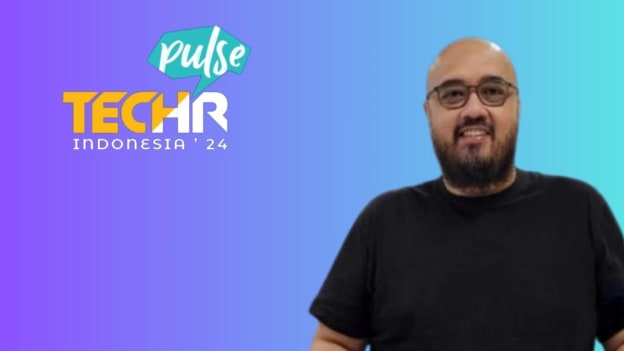Empowering the Future of Work Through Technology: A TechHR Pulse Interview with Sri Adhityo

The rise of artificial intelligence (AI) and automation is reshaping the landscape of HR technology, sparking essential conversations across industries about how businesses and employees must adapt to this transformation. As these emerging technologies evolve, they are revolutionising traditional processes, allowing for greater efficiency, precision, and data-driven decision-making. However, the true success of tech adoption lies not only in its implementation but also in the development of skills necessary to leverage its full potential.
In this exclusive interview as part of TechHR Pulse Indonesia buzz, Sri Adhityo, Head of People and Corporate Affairs, JULO delves into how technology has evolved, the shifting landscape of HR amidst the AI and automation boom, and how HR tech can foster employee skill growth tailored to business needs.
Here are the edited excerpts:
Observing big technological shifts in the space of People and Work
I have witnessed several significant technological shifts in the HR landscape recently. Virtual collaboration tools like Microsoft Teams, Zoom, and Slack have become essential, streamlining both real-time and flexible communication. Automation has also transformed routine HR tasks such as payroll and compliance reporting, allowing HR professionals to focus on strategic initiatives. Moreover, integrated platforms that unify HR functions—like performance management, employee engagement, and learning—are gaining popularity, offering a holistic view of the employee experience. Additionally, Learning Experience Platforms (LXPs) now enable more personalised development, while digital well-being tools support mental health and work-life balance for remote and office workers alike.
The essential pillars of skill development and their implementations
At JULO, we have taken a comprehensive approach to skill development, starting with self-assessment and goal-setting. Employees are encouraged to identify their strengths and areas for improvement, forming the foundation for their Individual Development Plan with clear, measurable goals. Beyond formal learning, online resources, tutorials, and webinars are also utilised to stay updated on industry trends.
A ‘Seek Feedback’ mechanism has been set up to accommodate employees to be able to regularly seek constructive feedback from peers, mentors, or supervisors to understand their progress and areas needing improvement. Additionally, a mentoring program has been established to build a relationship with a mentor who can provide guidance, share insights, and help navigate an employee's career path. These programs also make use of online learning platforms (e.g., Coursera, LinkedIn Learning) and tools that facilitate employees' skill development.
Balancing the adoption of HR tech for effective business-focused employee skill development
Balancing the adoption of HR tech with its use for employee skill development starts with aligning technology to our organisation’s strategic goals. At the core, it’s about improving productivity and addressing skill gaps while enhancing employee engagement. We focus on personalised learning, ensuring that employees have access to tailored development paths. The next step is the feedback mechanisms, which play a crucial role in refining these programs. Leveraging data analytics helps us understand performance trends, and adopting platforms like Learning Management Systems (LMS) fosters continuous learning. By recognising achievements, we can ensure that employees remain motivated and engaged in their growth.
The most effective strategies for me are the pilot programs that test new HR tech and gather feedback before full-scale implementation. This allows us to make necessary adjustments based on real-world usage. Also, involving cross-functional teams, which includes HR, IT, and business leaders, in the selection and implementation of HR tech ensures the programs meet diverse needs and integrate well with existing processes.
What key leadership lessons do you believe are crucial for the success of a talent leader adopting HRTech to foster employee growth?
Future leaders need to clearly articulate how the HR tech aligns with their company’s vision and how it will benefit both the organisation and employees. This helps in gaining buy-in from stakeholders and users. It is also important to demonstrate a willingness to embrace new technologies and encourage your team to do the same. Your adaptability can set the tone for others.
Anticipating and addressing resistance to change by involving employees in the decision-making process is vital. This helps in providing clear, consistent communication about the benefits and impacts of the new tech. Also, ensure that new HR tech integrates seamlessly with existing systems to create a cohesive ecosystem that supports various HR functions without redundancy.
Last but not least, establish clear metrics for evaluating the success of HR tech initiatives, such as improvements in employee engagement, productivity, or skill development.
What advice would you give to fellow HR leaders on balancing talent expectations with business needs for growth?
For leaders looking to balance HR tech with business-focused employee development, it is important to first gain a thorough understanding of your organisation’s strategic goals and how they shape talent needs. This alignment is a must as it prioritises HR initiatives that drive business growth.
Secondly, communicating HR initiatives clearly across all levels ensures everyone sees their role in driving business growth. HR leaders must take note that flexibility is key— be ready to adapt HR strategies to changing conditions while keeping long-term objectives in mind.
Make the data your friend; use HR technology to gather insights on performance and engagement, and partner closely with business leaders to ensure your strategies remain relevant and effective.
So you like this one? Join us and stay abreast on the latest insights and offerings at People Matters TechHR Pulse Indonesia 2024. Click now to know more. Stay tuned at #TechHRPulseIndonesia.















